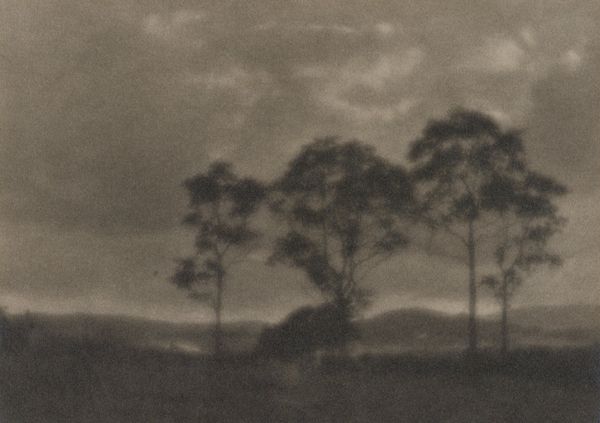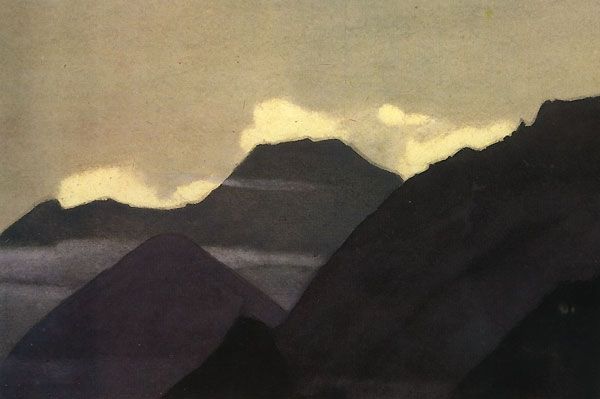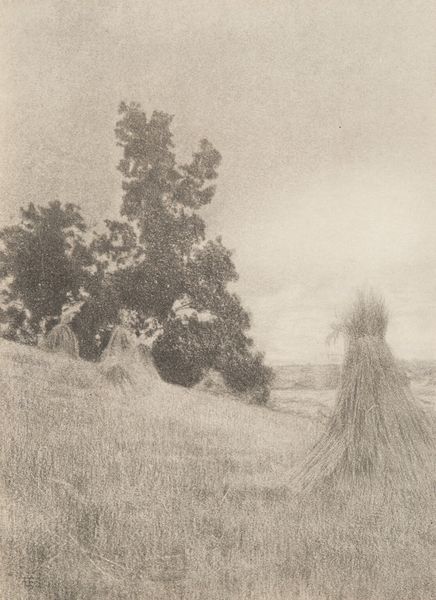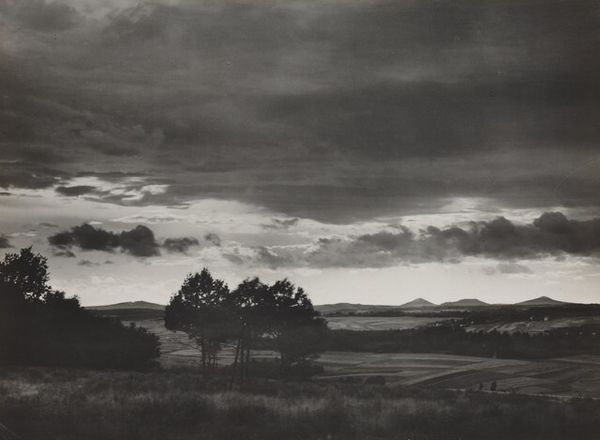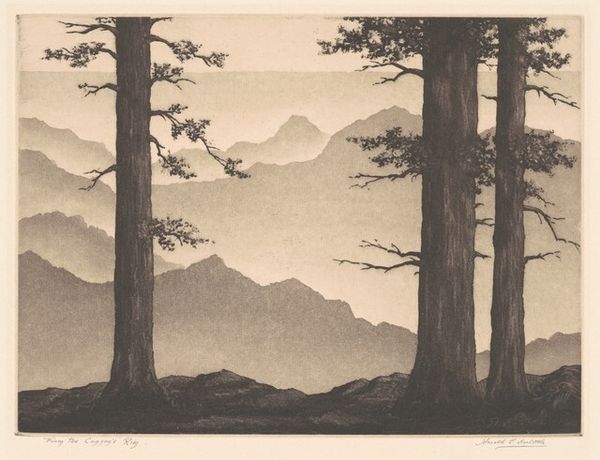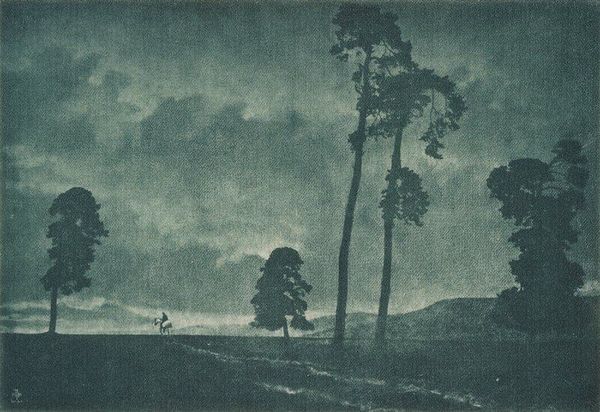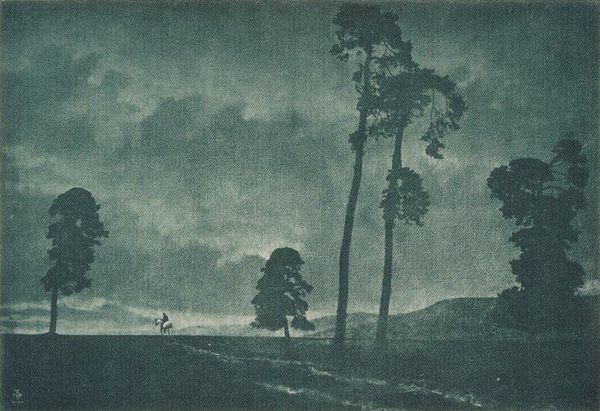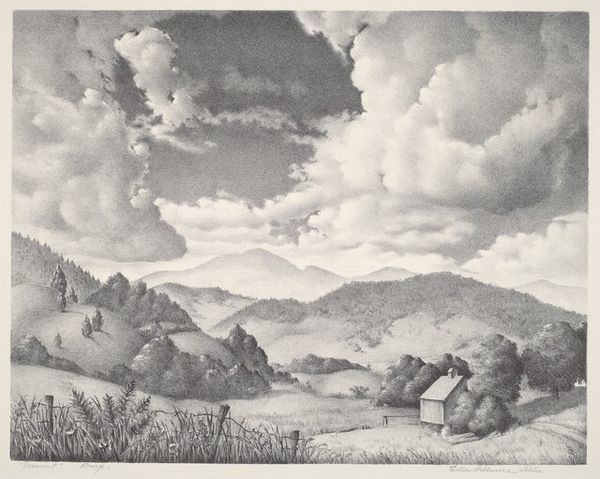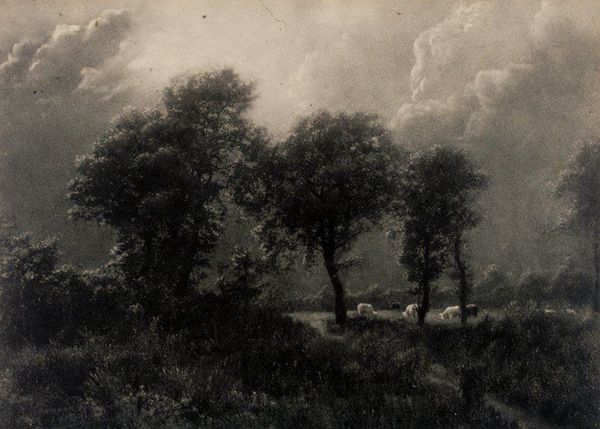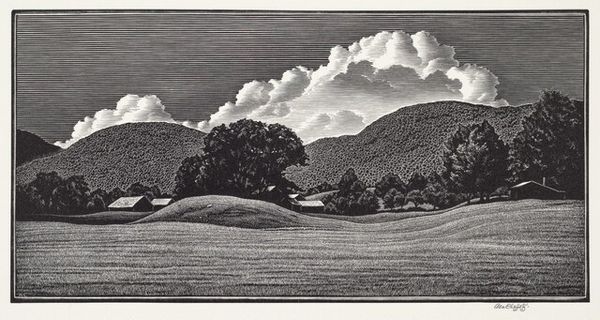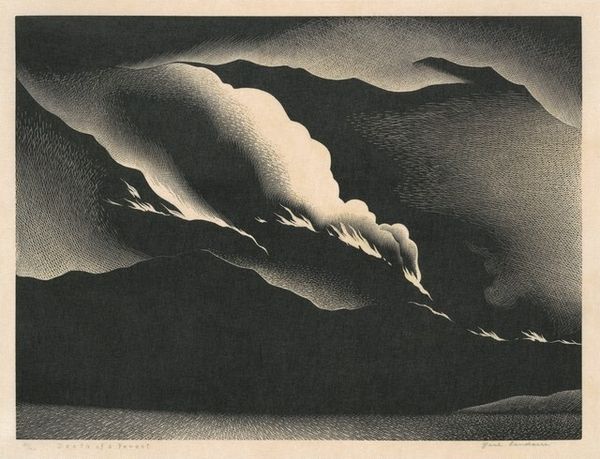
gelatin-silver-print, photography, gelatin-silver-print
#
still-life-photography
#
gelatin-silver-print
#
pictorialism
#
landscape
#
photography
#
gelatin-silver-print
#
united-states
Dimensions: 10 1/2 x 12 3/8 in. (26.67 x 31.43 cm) (image, image/sheet; primary image)15 1/2 x 20 1/2 in. (39.37 x 52.07 cm) (mount)
Copyright: No Copyright - United States
Curator: There's a rather melancholy beauty to this piece, wouldn't you agree? It’s called "The Way to the Valley," a gelatin-silver print made around 1917 by Wilbur H. Porterfield, currently residing here at the Minneapolis Institute of Art. Editor: It evokes a profound sense of solitude, almost yearning. The starkness of the monochrome palette combined with the sweeping sky and lonely path gives a timeless quality, reminding me of landscapes from classic literature. What’s the social context of pictorialism, particularly as practiced in the United States at the time? Curator: Pictorialism, gaining momentum at the turn of the century, was in part a reaction against the growing mechanization and industrialization of the modern world. This aesthetic aimed to elevate photography to the level of fine art by using soft focus, hand manipulation, and other techniques to emulate painting and etching. For me the symbolism of path always suggest transition. Do you see this photo aligning with similar symbolic images in other cultures, showing a visual metaphor for spiritual journeys and passages? Editor: Precisely, think of Caspar David Friedrich and his Romantic wanderers. Pictorialism aimed to infuse emotion into images. In America, the movement took on a nationalistic aspect too. Images like "The Way to the Valley," which romanticized rural landscapes, created a mythologized vision of the American heartland, often masking the socio-economic realities of rural life after World War I. The very process— the gelatin silver print— becomes part of the narrative; what meaning did technological processes around this time impart to viewers? Curator: I can only imagine it would further romanticize progress. What I think this piece suggests is a longing for simpler times, which resonated with many Americans after the great World War. Perhaps Porterfield subtly tapped into the universal human experience of seeking solace and connection through nature— that road promising the ability to reconnect to an idealized community that transcends national identity, a desire to belong to the earth itself. Editor: That makes me think of the American Dust Bowl period after this, also romanticized later, and I wonder whether he believed that imagery could rewrite hardship into strength. Maybe "The Way to the Valley" is a form of pre-emptive pastoral elegy— for those rural traditions in the United States during the early twentieth century. Curator: An elegy of sorts. In all, an exploration of cultural and environmental transformation! Editor: A pensive one. Well said.
Comments
No comments
Be the first to comment and join the conversation on the ultimate creative platform.
